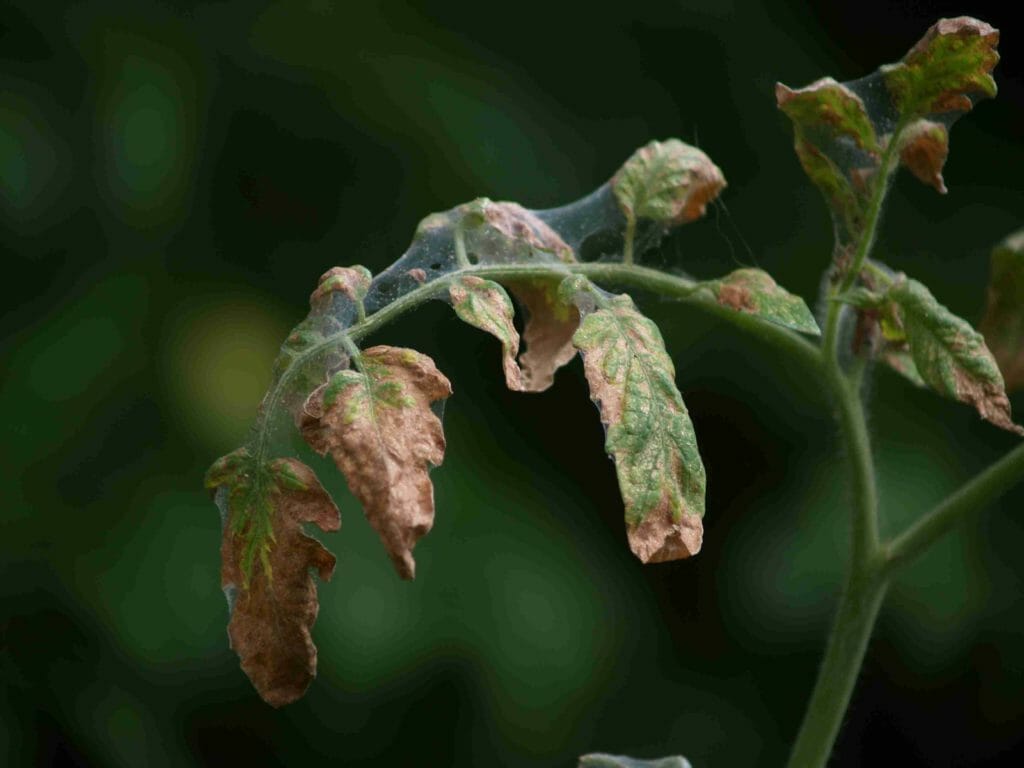The leaves on a tomato plant are good indicators of the plant’s health. Tomato leaves can display all kinds of distress signals: yellowing, brown spots, purple edges and curling are all signs that the plant needs a little extra TLC. Wilted leaves mean the same.
Don’t be too concerned, though, if you spot wilted leaves during the hottest part of the day. The leaves just may be hot and languid (like all of us!). However, if the leaves remain wilted during the cooler evening or morning hours, your tomato plant is likely sending an SOS signal. Check for these issues:
Under Watering
A general rule is that mature, producing tomato plants need two inches of water per week. If you’re a stickler for following exact rules, set up a rain gauge and supplement any weekly rainfall with manual watering, as required. That said, the two-inch guideline may be insufficient at times. Extremely hot, dry and windy weather, or watering during the hottest part of the day, can increase evaporation and decrease moisture absorption by the soil. Sandy soils drain quickly and may not hold moisture long enough for your plants’ needs. Also, two inches per week is not sufficient for most container tomatoes.
This New All-Natural Fertilizer Doubles Garden Production!
It’s easy to check and see if there’s enough moisture in the soil. While the surface will usually be dry, soil 1-2 inches beneath the surface should feel damp. Stick your finger into the soil up to your knuckle; if the soil at the tip of your finger feels dry, your tomatoes need more water.
Fungal Diseases
If your soil seems adequately moist, and your plants seem to wilt more after being watered, they probably have a fungal disease such as verticillium wilt, fusarium wilt, or southern blight. Unfortunately, tomato plants infected with any of these need to be destroyed, to stop the fungi from spreading.
Verticillium Wilt and Fusarium Wilt
Verticillium wilt and fusarium wilt are quite similar, and it can be difficult to tell which is infecting a plant. In both cases, the fungus lives in the soil, and the plant’s roots absorb it. As it infects the plant, it clogs the plant’s vascular system so that moisture can’t travel to the branches and leaves.
Both verticillium wilt and fusarium cause leaves to develop yellow spots, brown veins and wilt. Lower leaves show symptoms first. As the disease progresses, browned leaves dry up and fall off. The main difference between the two diseases is that fusarium wilt generally shows up on one side of a plant, while verticillium wilt moves more slowly, is less dramatic (noticeable), and isn’t restricted to one side.
Again, there is no cure for either of these diseases. It’s best to practice preventative measures including rotating crops, amending soil (when needed) so that it has adequate drainage, and choosing disease-resistant tomato varieties. Also, make sure to clean and sanitize all your garden tools (including tomato stakes and cages) if you suspect your plants have either of these diseases so that you don’t inadvertently transfer the fungi to a new bed. If you still end up with an infected plant, destroy it promptly and remove the surrounding soil.
Southern Blight
The initial symptoms of southern blight are quite similar to those of verticillium wilt and fusarium wilt: discolored leaves and wilt, starting at the base of the plant. However, once it progresses far enough, the plant collapses. You can determine whether it’s southern blight before your plant gets to that point; check for white hyphae or mycelia (soft, stringy, mold-type substances) around the plant’s lower stem, roots, and in the surrounding soil.
As with the other two fungal diseases, plants infected with southern blight cannot be treated.
Tomato Spotted Wilt Virus
Wilting is actually the last stage of tomato spotted wilt virus (TSWV); long before the plant starts to wilt, the rest of the plant will be sending out serious distress signals. Typically, plants infected with TSWV are stunted and pale, and often turn a bronze color. Leaves on these plants often have distinctive markings of circular or swirling patterns. Unlike other tomato diseases, TSWV first shows up in a plant’s top leaves.
TSWV is spread by small insects called thrips, which pierce plants in order to feed off them. As with fungal diseases, there is no way to stop TSWV from progressing once it sets in. Plants (and the thrips on them) should be destroyed. The best preventative measure is weed control, because thrips will feed on weeds until tastier plants are available to them.
The good news about TSWV is that it’s not transmitted through soil, and therefore there’s no need to remove soil when destroying plants.
Bacterial Wilt and Canker
Bacterial wilt is the one tomato disease where wilt is the predominant symptom. There is generally no discoloration of the leaves. The entire plant stays green, wilts and dies shortly afterward.
Bacterial wilt is most common in hot, humid regions, and particularly in soils that have a high pH. As with the other tomato diseases discussed here, there is no treatment for bacterial wilt. Diseased plants should be destroyed and preventative measures should be taken. Rotate crops, choose modern disease-resistant varieties, monitor soil pH (and adjust as necessary), and ensure generous air circulation by spacing plants widely and pruning indeterminate varieties.
Other Possibilities
Pests such as stalk borers, root knot nematodes, and aphids also can cause wilting, but they aren’t commonly attracted to tomato plants. However, if your plant displays symptoms that don’t seem to match any of the diseases listed above, it’s worth taking a close look for pests.
Also, the allelopathic properties of some plants can adversely affect tomatoes and cause wilting. Through allelopathy, plants leach their own natural chemicals into the soil, and those chemicals can affect nearby plants in both good and bad ways. Tomatoes are negatively impacted by black walnut and butternut trees and by sunflowers. If you have wilted tomato plants, in addition to checking for diseases and pests, take a look at what’s planted nearby.
What advice would you add? Share your thoughts in the section below:
 Off The Grid News Better Ideas For Off The Grid Living
Off The Grid News Better Ideas For Off The Grid Living





